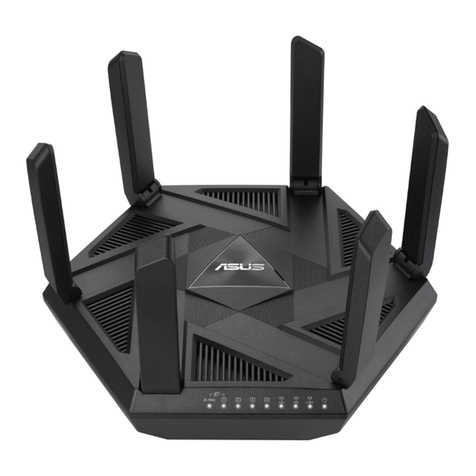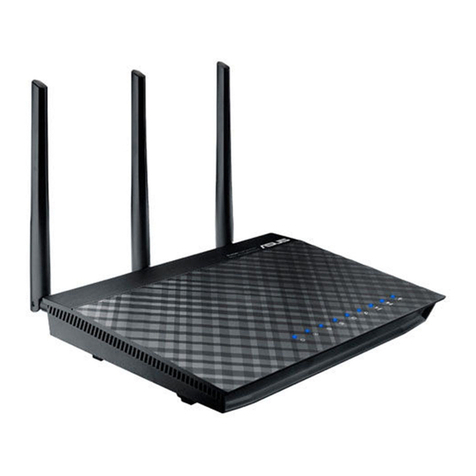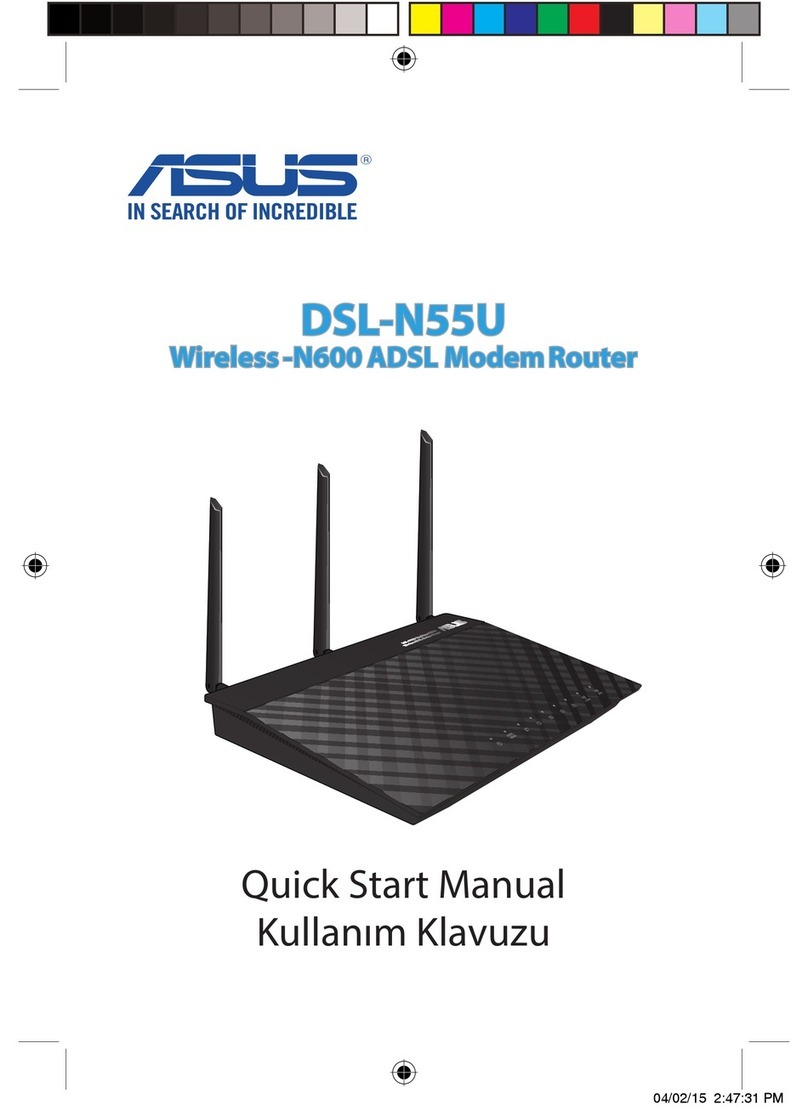Asus SL200 User manual
Other Asus Network Router manuals

Asus
Asus RT-AC86U User manual
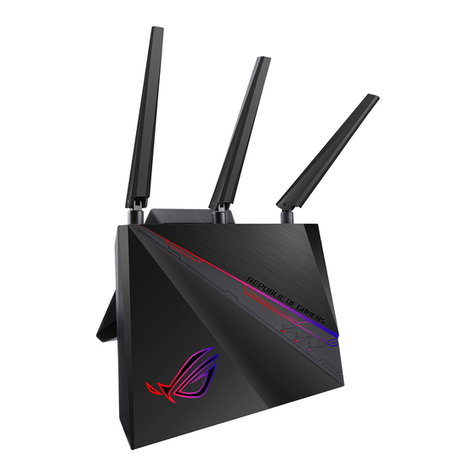
Asus
Asus ROG Rapture GT-AC2900 Installation guide

Asus
Asus RT-AC56U User manual
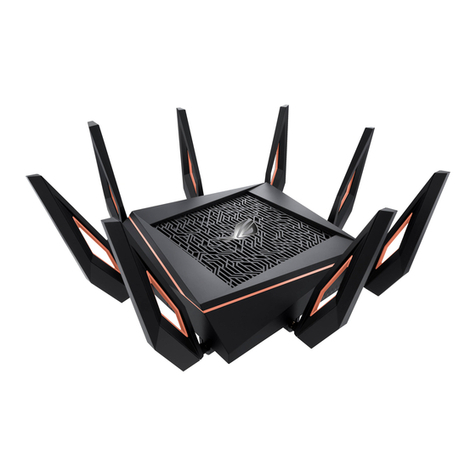
Asus
Asus Republic of Gamers Rapture GT-AX11000 User manual
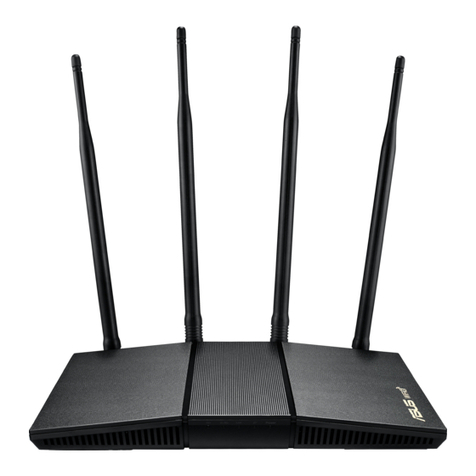
Asus
Asus RT-AX1800HP User manual
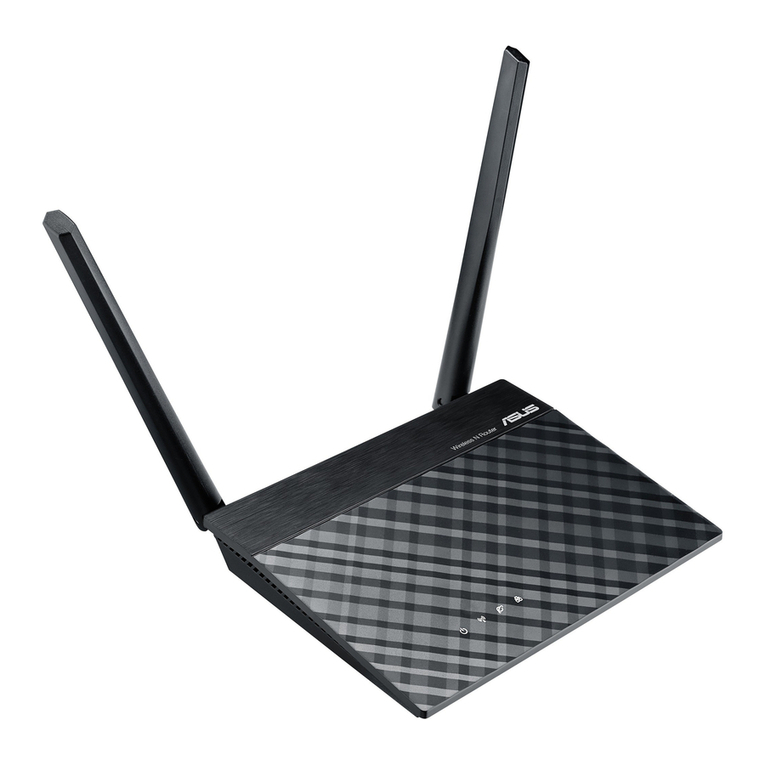
Asus
Asus RT-N300 B1 User manual
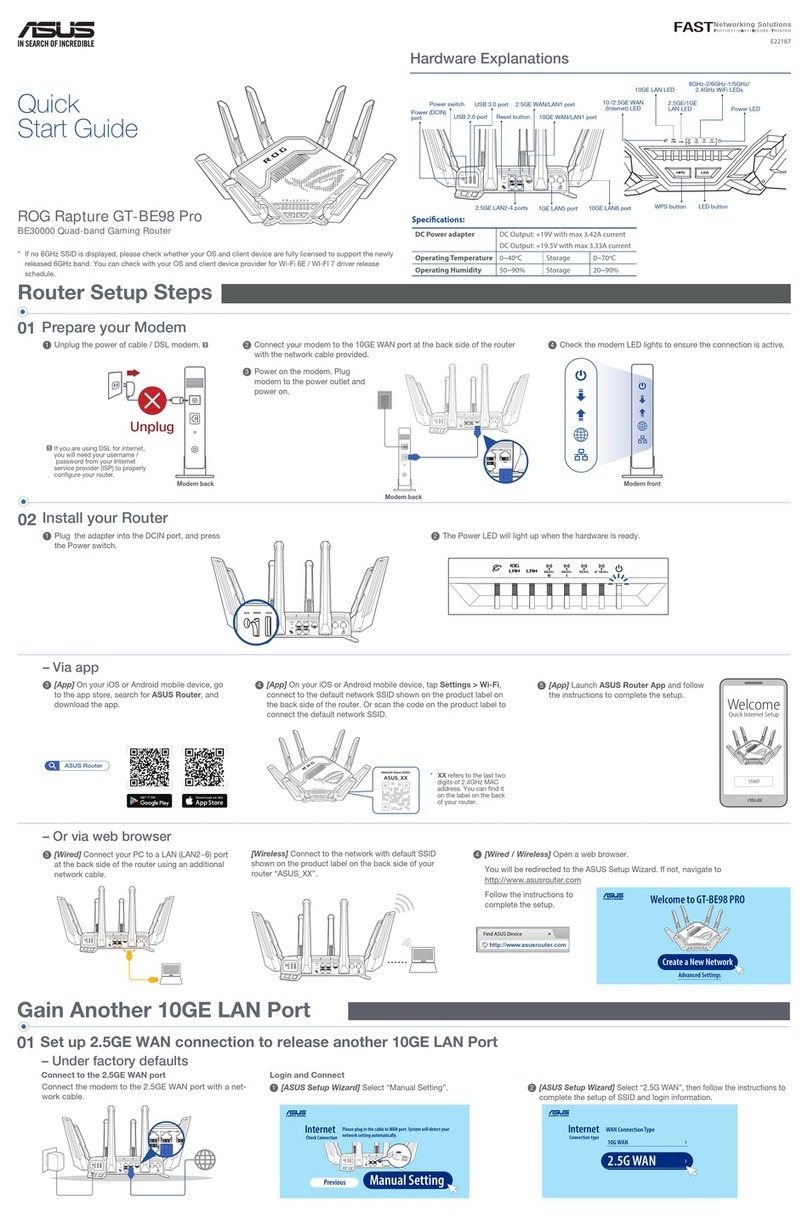
Asus
Asus ROG Rapture GT-BE98 Pro User manual

Asus
Asus ZenWiFi XD5 User manual
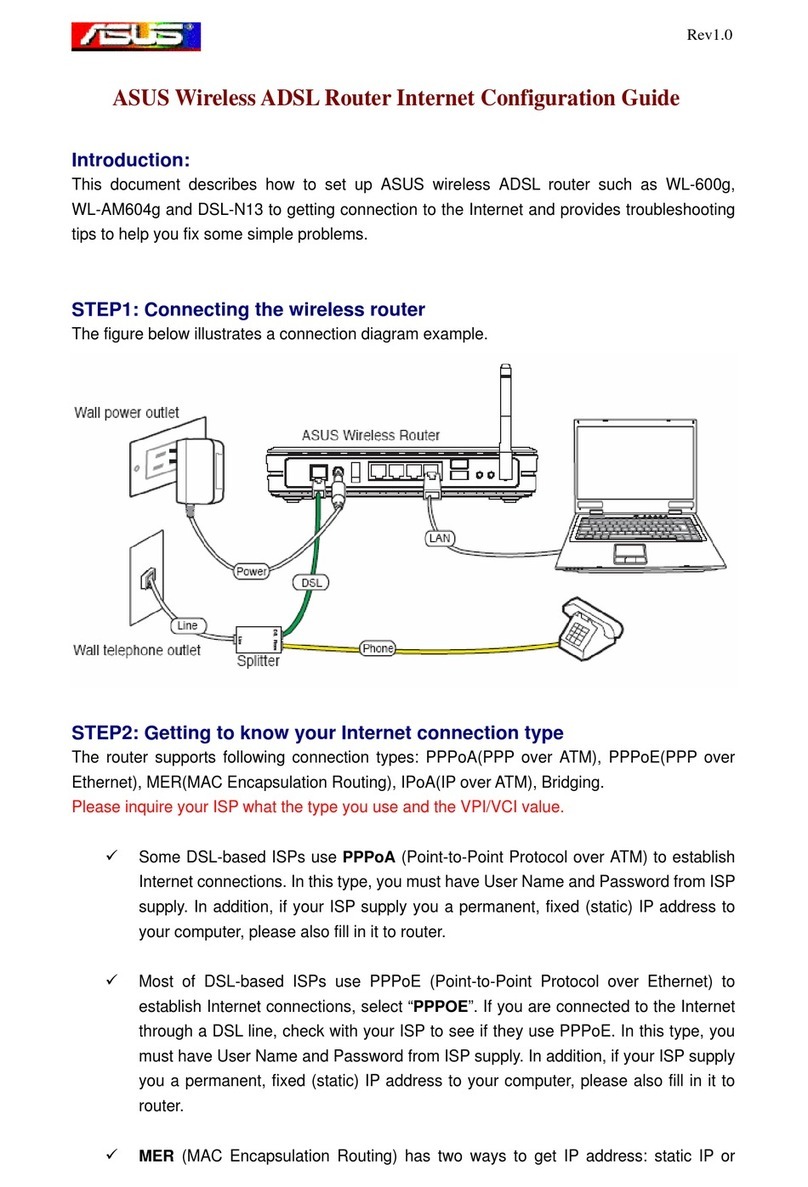
Asus
Asus WL-600g User manual
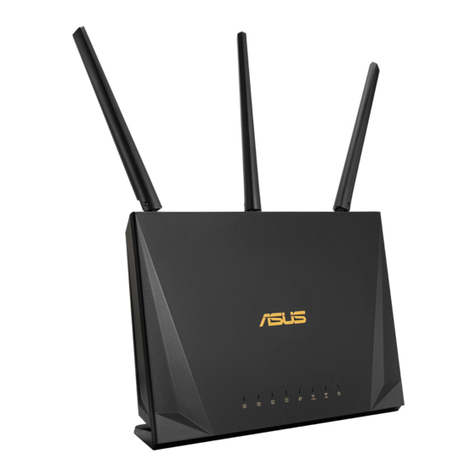
Asus
Asus RT-AC2400 User manual
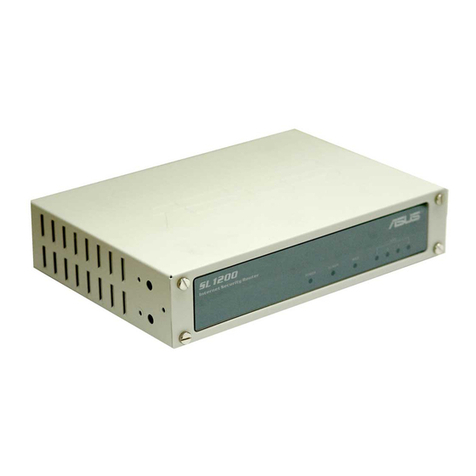
Asus
Asus SL1200 User manual

Asus
Asus RT-AC55U User manual

Asus
Asus WL-AM604 User manual
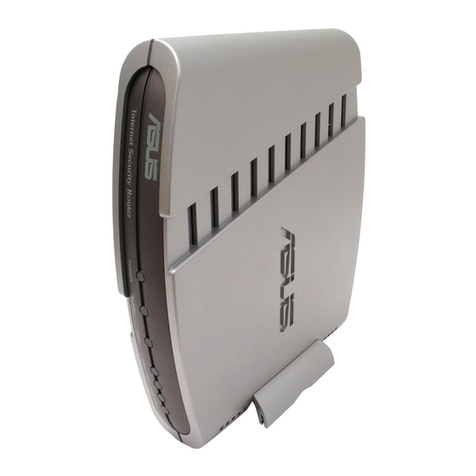
Asus
Asus Internet Security Router User manual
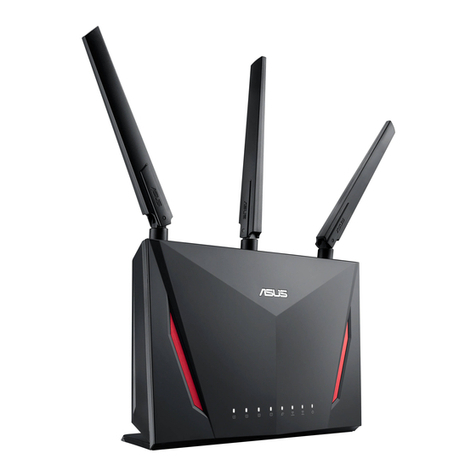
Asus
Asus RT-AC86U User manual

Asus
Asus ZenWiFi Pro ET12 User manual

Asus
Asus Republic of Gamers GT-AC2900 User manual
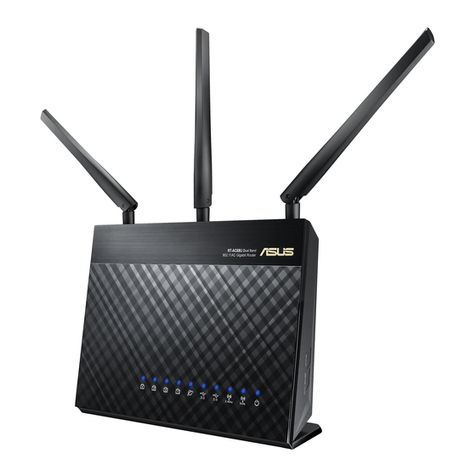
Asus
Asus RT-AC68U V3 User manual
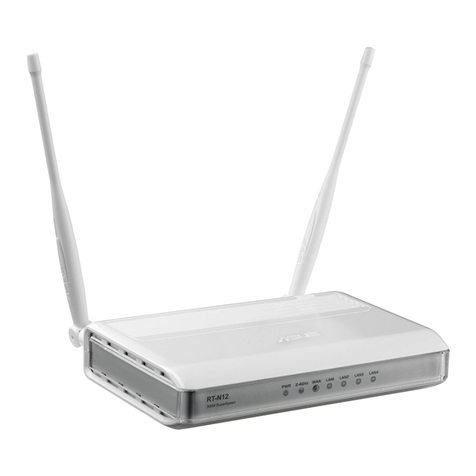
Asus
Asus RT-N12B1 User manual
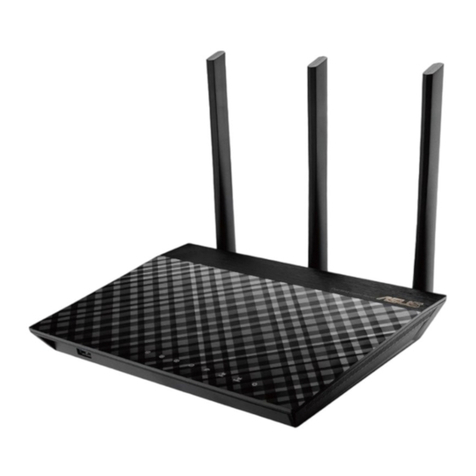
Asus
Asus 90IG04K0-BU9100 User manual
Popular Network Router manuals by other brands

TRENDnet
TRENDnet TEW-435BRM - 54MBPS 802.11G Adsl Firewall M Quick installation guide

Siemens
Siemens SIMOTICS CONNECT 400 manual

Alfa Network
Alfa Network ADS-R02 Specifications

Barracuda Networks
Barracuda Networks Link Balancer quick start guide

ZyXEL Communications
ZyXEL Communications ES-2024PWR Support notes

HPE
HPE FlexNetwork 5510 HI Series Openflow configuration guide
